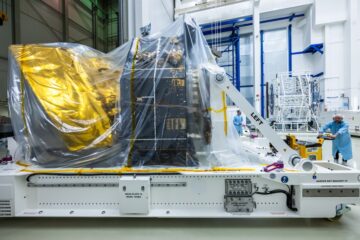Article written by: Heather Alexander
The Armagh Observatory has been a staple feature along the Armagh skyline since its creation in 1790. Astronomical research has been undertaken within the organisation since the 1790s and to this day it has seen several different Directors and numerous astronomers walk through its historical doors.
How did it all begin? What prompted the building of such an organisation, and in Armagh of all places? Surely Belfast would have been the better place, or Derry-Londonderry? In this article we will look at the very beginning, the big bang, as it were.

Armagh Observatory. Opened in 1790 thanks to the efforts of Richard Robinson, Archibishop of Armagh. Image Credit: Armagh Observatory and Planetarium
The story starts with a man known as Richard Robinson. Sources state that he was born in Surrey near London in 1708 and was educated in Oxford. After leaving school, he became a member of the clergy in the Church of England. He came to Ireland in 1751 as the chaplain to the new Lord Lieutenant of Ireland, the Duke of Dorset, Lionel Cranfield Sackville. Ireland during this time was dominated by the Penal Laws. Members of the Catholic and Presbyterian community were discriminated against by these laws, the Catholic community more so, and so the Anglican Church dominated. Robinson’s rise in the church was largely untroubled and by 1761 he was a Bishop in Kildare. At this point he was also appointed the Dean of Christ Church, Dublin.
Surprisingly, when the position in Armagh became vacant in 1764, Robinson was not the natural successor. In Ireland Robinson was viewed as a “strange man” simply because he refused to take part in the twists and turns of Irish politics. This trait ended up working in his favour and he was given the Primacy in Armagh, which gave him an opportunity to build and improve on a large scale. Being the Primate of Armagh gave him a large area to work with. Naturally he could not start building outside of his area and so therefore Belfast, Derry and other places were not considered for the construction of the Observatory. During this period Belfast was mostly a merchant town, not the industrial giant that it became in the 19th and 20th centuries and Londonderry was an important port town, integral for emigration and was undergoing a Georgian restoration.
The building of the palace in Armagh was started in 1768 and the Cathedral was constantly renovated. He founded a public library, an infirmary, a County Gaol and most importantly, the Observatory in 1789.
The Observatory was constructed during the period known as The Enlightenment. Across Europe from the late 1600s to the early 1800s saw a wider understanding of the world around us, with an emphasis on how humanity could be improved. The great thinkers of Europe and around the world produced essays, inventions, scientific discoveries and more. What better way to fully embrace such a period than to build an Observatory? These buildings were more than facilities of practical, or even theoretical science, but symbols of humanity’s enlightened state.
Land was procured for the Observatory, and even with some complex legal operations thrown in the mix, Robinson pushed on. The legalities over the land were far from resolved when the first map was made in October 1789. Robinson had a vision and he was determined to see it through. He cited his motives as “the public good of this Kingdom and… the encouragement of the Liberal Arts and Sciences.” Robinson’s vision changed Armagh for the better and his great work can still be seen across the City today.
The Architect of the Observatory was none other than Francis Johnston, born 1760, the son of an Armagh builder. Johnston apprenticed with the architect Thomas Cooley and when his mentor passed away, Johnston was 24 and found himself appointed as the architect to Primate Robinson.
Johnston started work on the Observatory and dated his design as 1789. The building was complete and opened in 1790. Johnston not only designed the Observatory in Armagh but also the tower of the old cathedral, the interior of the chapel at the Archbishops Palace, the courthouse on the Mall and the Shambles Market.
Johnston went on to become the most successful and prominent architect of his generation. His most notable, and historic work was the creation of the General Post Office in Dublin, a beautiful building no doubt, but most iconic in its role in the Easter Rising of 1916 many years later.
The history of the Observatory is long and detailed, and so not everything can be covered in one article. Here we have simply looked into how it was founded. We will look into the history of the Observatory more with articles on its subsequent Directors in future Astronotes blog posting. As we delve into the past we will see a wonderful, astronomical tapestry begin to evolve, and you will be able to see how the Armagh Observatory, now evolved into the Armagh Observatory and Planetarium, has had not just an impact on Armagh and Ireland, but on the world as well.





0 Comments